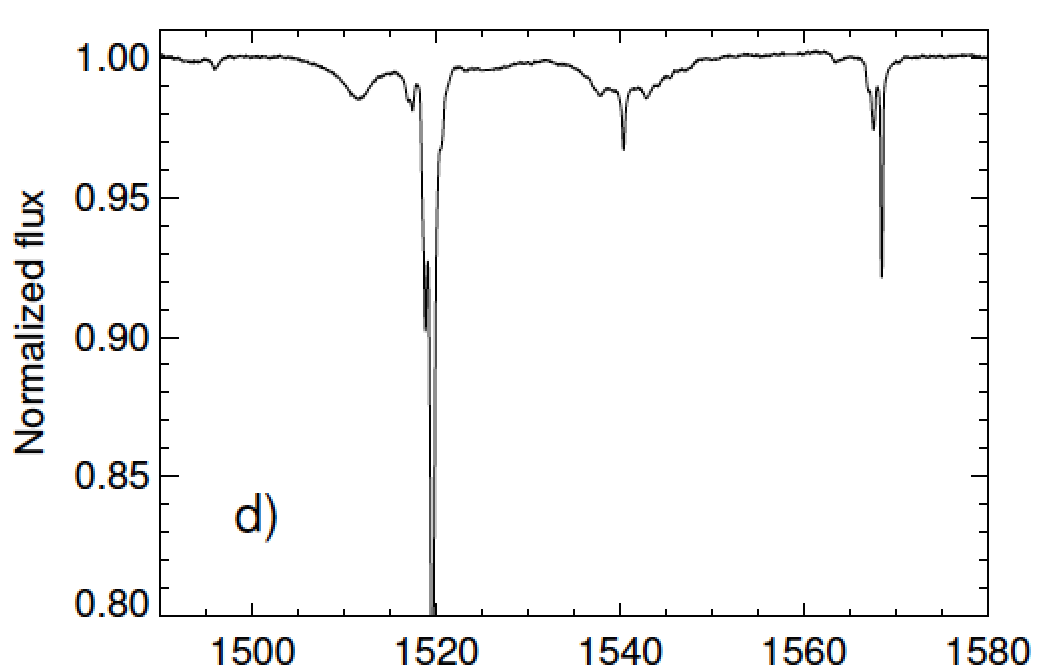 Welcome
Welcome
Manly Astrophysics is a scientific institute dedicated to research in astronomy. We focus on understanding astronomical data in terms of the underlying physical processes.
Our work is explained in the "Projects" section. Some of the illustrations use CDFs, so you'll need the CDF-reader. It's free. Please download it from here:

What’s new on this site?
News & Views & Events
 Did you hear about the discovery of a star that hosts an advanced alien civilisation? Indeed I heard the story. It's a fun idea which has attracted a lot of attention in the media. But "Aliens!" is not my preferred interpretation of the data - and in that, I think I'm not alone. The star in question is KIC 8462852. It's interesting, and potentially important, because it behaves in a way that's hard to understand.
Did you hear about the discovery of a star that hosts an advanced alien civilisation? Indeed I heard the story. It's a fun idea which has attracted a lot of attention in the media. But "Aliens!" is not my preferred interpretation of the data - and in that, I think I'm not alone. The star in question is KIC 8462852. It's interesting, and potentially important, because it behaves in a way that's hard to understand.
Shortly after I read the original paper by Boyajian et al, I was contacted by Keith - an amateur astronomer from the UK - who wondered whether the strange dipping behaviour seen in KIC 8462852 could be caused by one of the cold, dense clouds (dubbed "paleons") which we've been modelling here at Manly Astro? The thing which Keith had noticed is that the proposed explanations for the dips in the KIC 8462852 light-curve all centred on the possibility of something in orbit around the star. Could the cause be interstellar instead? He pointed out that no periodicity would be expected for an interstellar occulter, and nor should there be an infrared signal (see below). Good points.
I'd be delighted if Keith were proved right, but I doubt that KIC 8462852's strange behaviour is due to an interstellar paleon. Here's why. It's true that interstellar paleons could cause dips in the brightness of a background star: the clouds are so cold and dense that they probably contain small quantities of hydrogen snowflakes, and the snow would scatter light, making any background star look temporarily dimmer. However, paleons must be composed primarily of very dense gas (helium and molecular hydrogen), which is highly transparent, but which refracts light - much like the Earth's atmosphere does. As a result paleons should also act as lenses (Draine 1998), magnifying any background star. It's difficult to predict what the resulting light-curve should look like, but it shouldn't be limited to dimming of the star - periods of brightening would be expected too. By contrast, KIC 8462852 seems to show only dimming events (see examples shown below).

The brightness of the star KIC8462852, as a function of time (in days). Observations made by NASA's Kepler spacecraft, and reported by Boyajian et al (2015, submitted to Monthly Notices of the Royal Astronomical Society).
So not caused by a paleon, then? Well, probably not an interstellar paleon. But a paleon should form quite a weak lens, with a focal length that is perhaps hundreds of light-years or more. And if it were close to the star - much closer than its focal length - then the effect of the lensing would be small. We'd be left with just the dimming effect of the snowflakes.
If we need the paleon to be very close to the star, then presumably it's in orbit, so what about the lack of periodicity in the dips, and the lack of an infrared signal? Aren't they problems for a model based on an orbiting paleon? Well until we've finished our detailed modelling of the internal structure of paleons it'll be difficult to predict what paleon eclipses should look like. But here are a couple of qualitative aspects which suggest that an orbiting paleon might be able to explain the behaviour of KIC 8462852.
First, the infrared. Because KIC 8462852 shows some intervals when its brightness falls by up to about 20%, it seems that something large and opaque must be transiting in front of the star. Blocking the light is most easily done if the stuff that's getting in the way is in the form of tiny (micron-sized) particles. And if you put a cloud of tiny particles close to a star, they would normally be expected to absorb starlight, warm up and emit infrared radiation. That's why the lack of an infrared signal is puzzling. But hydrogen snow doesn't actually absorb much starlight - it tends to scatter light, rather than absorbing it. Equally importantly, the snowflakes are immersed in the dense gas that forms the bulk of the paleon, and as a result their temperature is maintained close to that of the gas. So they emit in the microwave region of the spectrum, rather than the infrared.
Secondly, if hydrogen is precipitating out of the gas phase, the resulting snowflakes drift towards the centre of the cloud and that gradually alters the radial composition profile. Gas in the centre of the paleon becomes hydrogen-rich, whereas gas near the surface becomes helium-rich. This situation makes the structure prone to convection, as the lighter, hydrogen-rich gas tends to be buoyant in the heavier, helium-rich gas which overlies it. Thus we have an expectation that paleons are likely to be composed of convection cells in their outer layers, with snowflakes being created and destroyed in individual cells as gas cycles through expansions and compressions in those cells. This means that a single paleon could introduce mutiple dips in a star's brightness during a single occultation of that star. Furthermore it's likely that the three-dimensional structure of the convection cell pattern will evolve with time, so the timing of the individual dips may vary from orbit to orbit. Finally, the fact that paleons tend to have large radii - perhaps comparable to the Earth-Sun distance - means that paleons in close orbits may eclipse their host star for a substantial fraction of their orbital period. Each of these factors mitigates against detection of that orbital period.
I made the foregoing points in my reply to Keith. If he's interested, I thought, maybe other people are too? So there you go.
MW 1st Nov 2015
